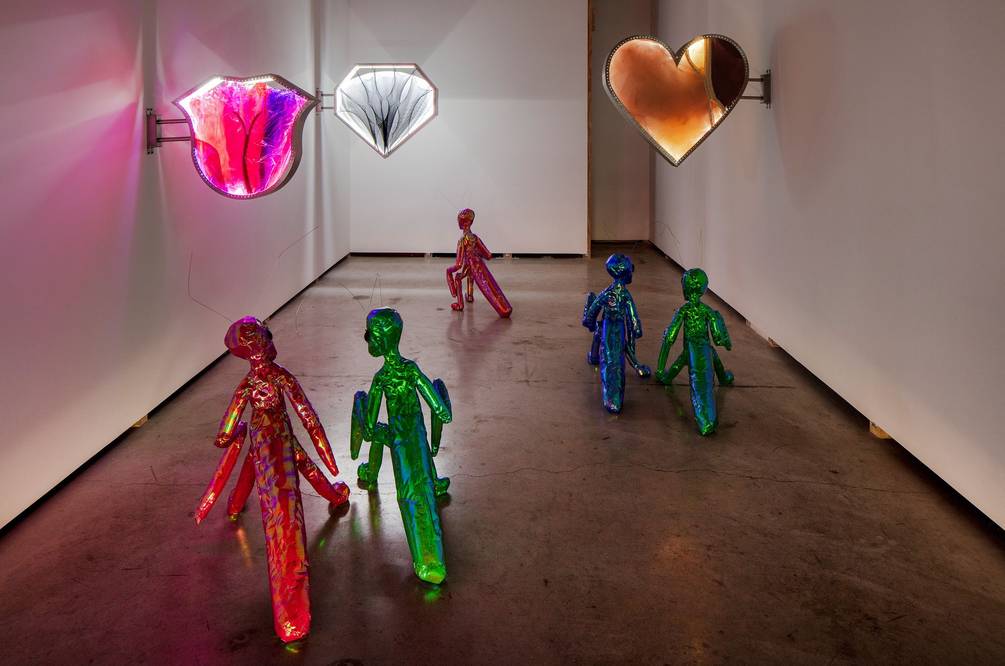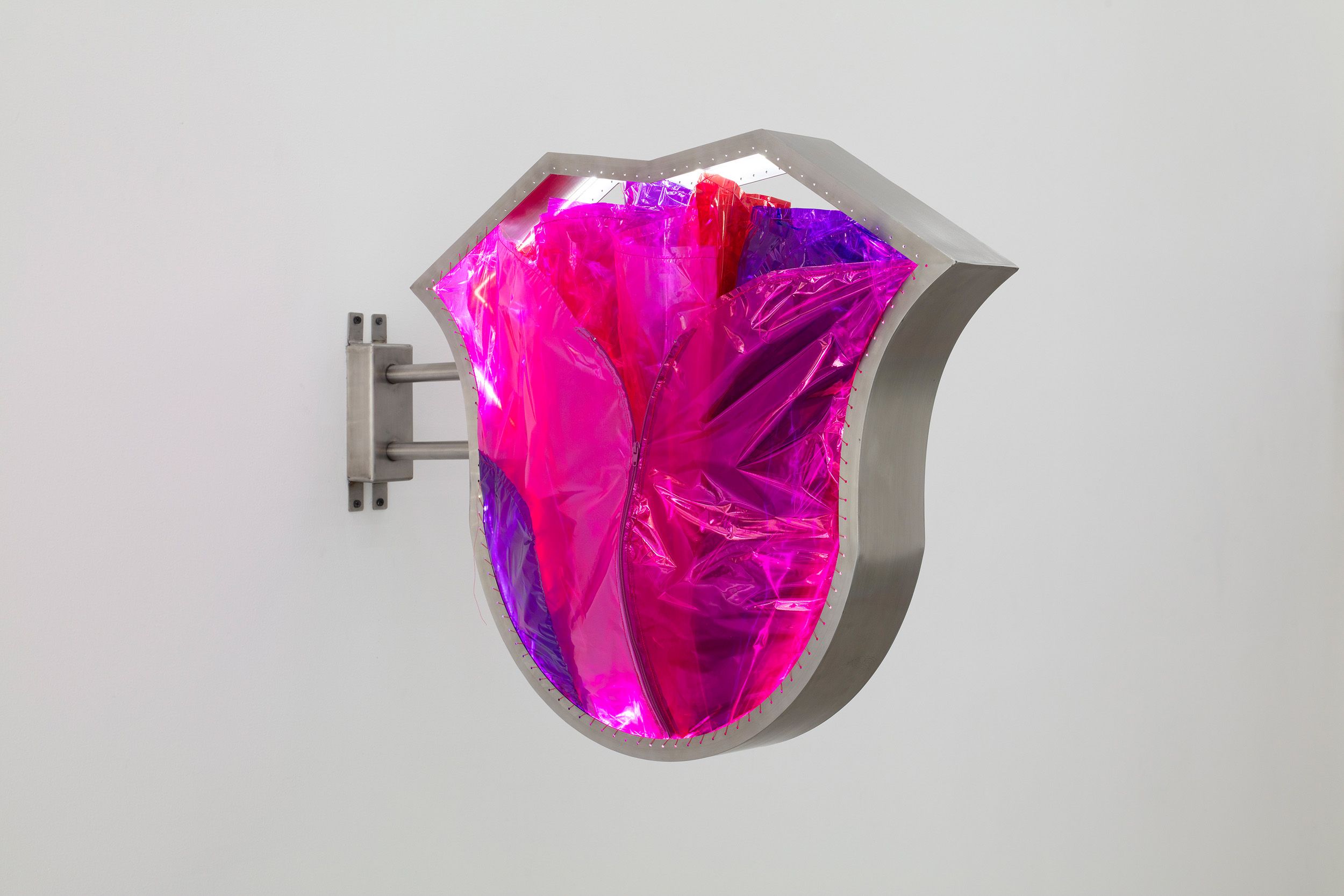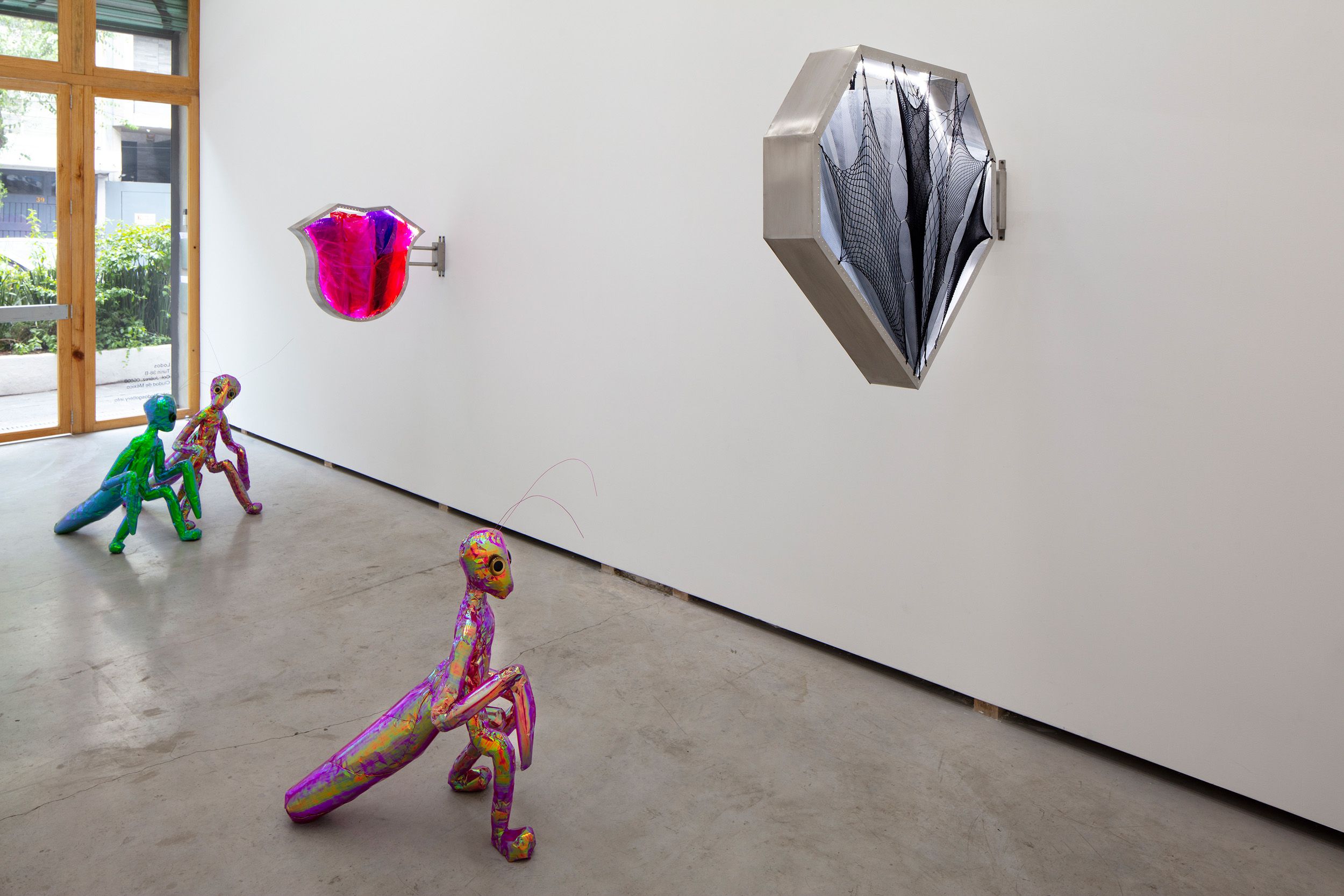
Review
Mina Squalli-Houssaïni at Lodos: i’m sorry for bugging you but
by Verana Codina
Reading time
4 min
Following two collective exhibitions, Mina Squalli-Houssaïni presents her first individual show at the gallery Lodos. With just three visits, the Swiss artist has ventured to produce locally all the work on view. This decision, despite seeming to be risky for a tourist who does not know the city’s ropes, ended up benefiting from the highly extensive offerings in materials found in the Historic Center’s streets and markets.
With support from tailors, blacksmiths, and electricians, Mina has produced a total of eight objects, among them three illuminated signs of different shapes (flower, heart, and diamond), as well as five praying mantis figures in brilliant hues filled with papier-mâché. The signs attached to the walls of the space illuminate from above the bugs that seem to converse in groups: two in pairs and a third hanging on its own.

In this work, Mina manages to balance her inner with her outer woes. Even when thinking in terms of resistance, provenance, heritage, and memory, the reflections are universal: in her work, the personal is political. This correspondence often appears in the relationship between the conceptual and the material solution with which she resolves her questions. In i’m sorry for bugging you but, the artist takes up the artisanal in order to talk about the hypercapital.
Such activities as patterning, sewing, filling, and even metal-forging belong to the realm of the domestic, of the manual, where time becomes diegetic and attention to detail prevails. Nevertheless, in these works there is also a certain visual contemporaneity that locates them as part of a fast, accelerated, and overflowing outside, where the spheres of the artisanal and the industrial—once separated—now overlap.

Via materialities that do not seem aggressive—they do not violate or dominate—the senses are stimulated and diverted, as in the sensuality of fabrics associated with lingerie (whether silk or lace), and in the choice of childish signs. Nevertheless, what remains is the premise that challenges consumerism, gender roles, and the exchange of material and immaterial goods.
Mina subverts narratives by opting for the manual production of objects that today are usually manufactured industrially, and that also respond to dynamics that make us question the value we have placed in their conceptualization. The artist comments on the ranges of romantic love, the capitalization of affects, and their significance.
In her signs, the reduction of an idea to a sign—which has been abstracted down to its minimal figuration, enough for it still to be recognizable—is the basic principle of graphic design applied to the creation of a commercial logo. The flower (which could here be specified as a tulip, although that degree of classification doesn’t matter), the heart (or what we understand by it), and the diamond are together part of the universe of images related to romance and desire, used and reproduced exhaustively as a formula of persuasion. These icons do not require written text in order to advertise their products; nevertheless, each sign is titled with a phrase—“thank you for (synthetic), forgive me for (B&W), longing for (bland)”—that functions almost like a slogan found inside a gift card. In contrast with the universal function of this type of message, Mina subverts the meaning and fills it with lyricism. They become perusasive out of intimacy.

The clientele walks around blinded by the dazzle of their own desires, which are provoked and restored by these signs. By confronting slightly anthropomorphic insects—moreover, in pairs—with this type of suggestive consumption, the artist reinforces the existence of certain stereotyped dynamics of normative relationships, where even the scandalous cannibalistic nature of mantises serves to draw a parallel with the “passionate devotion” in “love."
i’m sorry for bugging you but should not be understood as a simple play on words in relation to bugs, but as a posture of resistance for retaking control of a narrative via irony. i’m sorry for bugging you but: even if it bugs you, I’m going to tell you if something is bothering me.
Translated to English by Byron Davies
Published on May 29 2023